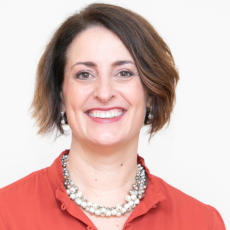What is the United Nations’ Food and Agriculture Organization (FAO), and what is its primary activity?
The FAO is an agency of the United Nations that specializes in food and agriculture with the underlying mission of contributing to eliminating hunger and malnutrition across the world. Our efforts also aid rural farmers and their families and agricultural production in different countries. Today, our organization counts on the membership of 194 national governments and the European Union and has 15,000 staff members worldwide.
At our core, we prioritize four areas of work. The first is as a global provider of data and market analysis on food prices, commodities, and the state of food security in the world. The second is our role in developing and implementing global standards for food safety and the trade in plant-related products. The third involves providing support to farmers and rural communication in emergency or crisis-settings, including countries affected by the climate crisis, the COVID-19 pandemic, the war in Ukraine and other conflicts. Here we collaborate closely with other partner UN organizations like the World Food Programme and UNICEF. Finally, we develop and share our technical skills and expertise with farmers to address issues related to crop production, pest control, irrigation, soil health, nutrition, animal disease, food loss, etc. Overall, these different functions allow FAO to build and sustain resilience in long-term agrifood systems in respective countries.
According to FAO statistics, it is expected that there will be a 70% increase in global food demand by 2050. How can we protect the Least Developed Countries (LDCs) from the impacts of population growth and climate change on food scarcity?
Different categories of food insecurity are measured using data from the Integrated Food Security Phase Classification (IPC) structure.

The countries of most concern in ascending order are those in IPC Category 3, which are in crisis; IPC Category 4, which face food-related emergencies; and IPC Category 5, which have been impacted by a catastrophe and/or famine. Today, 222 million people across 53 countries are classified under IPC Categories 3 through 5 — the highest figure we have seen since we started reporting.
Our main task is to work as advocates, to the donor community, multilateral community, and with private sector partners, for these emergency situations by pushing for more investment in agricultural productivity and rural livelihoods. Traditionally, we have seen the global community, and especially national government donors (like the United States, Canada, and individual EU countries) respond to humanitarian crises by investing a great portion of their funding in direct food assistance or life-saving nutrition support. FAO is especially concerned that, today, only 4% of this humanitarian funding is used to support life-saving, agricultural production resources, which include seeds, fertilizer, livestock vaccines, and animal nutrition. This is an issue because most individuals and families in IPC Categories 3 through 5 are farmers or rural families who rely on these resources for their livelihoods.
FAO also has an office dedicated specifically to high-priority countries that include not just LDCs, but also Landlocked Developing Countries (LLDCs) and Small Island Developing States (SIDS).
What does the FAO do to foster synergies between private investors and government donors contributing to resilience-building funding?
We need to broaden financial participation in building resilience in agriculture so that we are receiving support from not just international financial institutions, development banks, impact investors, and other corporations, but also UN partners, national governments, scientific and research institutions, NGOs, and civil society. In addition, with the advent of more intense and unpredictable crises, we must start thinking critically about ways of implementing early warning systems to address issues of climate change adaptation and mitigation.
As a UN specialized agency, the FAO receives funding through two channels: assessed contributions from member states and extra-budgetary donations from national governments, international institutions and climate funds, among others. In 2022, 25% of our extra-budgetary funds came from the World Bank and other regional development banks, while only a small portion of investment came from specialized private sector entities or foundations dedicated to addressing specific agricultural problems. Effectively, the FAO acts as the “match-maker” that connects private sector organizations to the real-time, in-country needs of an agricultural community or production system.
What advice would you give a private company that wishes to contribute to food security?
First, I would recommend private companies to demonstrate their shared commitment to achieving the Sustainable Developing Goals (SDGs), since globally there is still a skeptical perception of the private sector as being primarily for-profit. Frankly, I would also encourage companies to push UN actors like the FAO, as well as others in the international community, to work more creatively towards forming innovative collaborations and partnerships with the private sector in general.
What are one or two key objectives you would like the FAO to achieve during your tenure?
The first would be to draw attention to the importance of making meaningful investments in what we call “agri-food systems” that stimulate agricultural productivity of farmers and rural communities during this current global food security crisis. And as mentioned before, it is also important that we enhance the FAO’s collaboration with the private sector in the process of achieving these goals. Last, but not least, I would like to see more people with agricultural backgrounds as the decision-makers and influencers in key international organizations.





